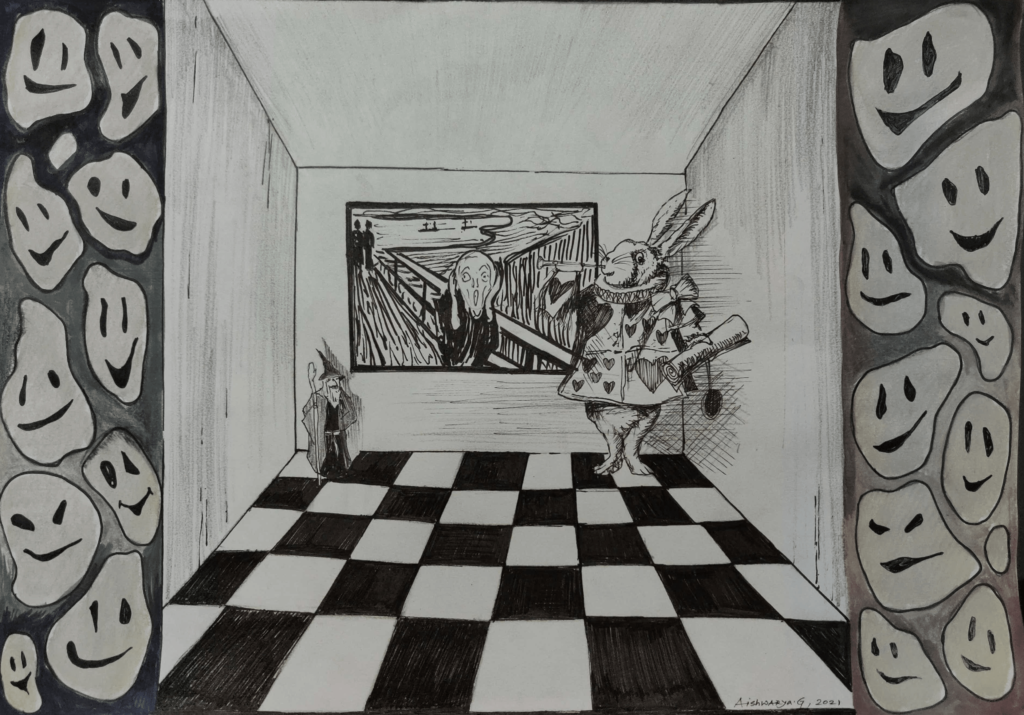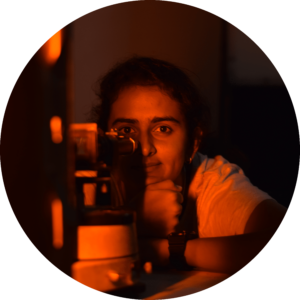Alice in Wonderland: more than just Fantasy Fiction!
Let me make it plain and simple; this science article is not about the famous girl who went down the rabbit hole, rather, about a disorder of the same name, which caught my attention while surfing through the internet, finding something peculiar to write about. You read that right! Alice In Wonderland Syndrome (shortened to AIWS) is a neurological disorder leading to a person experiencing a distorted vision, alteration in the size of one’s own body and other objects. Here I present the story of a “fantasy-inspired” disorder in the simplest way possible.
Let’s first dig into the past!
AIWS was first described in scientific literature by Caro W. Lippman in 1952, describing patients
experiencing a sense of becoming short while experiencing a migraine. He correlated this condition with what was described in the book Alice in ‘Wonderland’, where the protagonist experienced her body becoming too small or too large or parts of her body changing in size and shape (Lippman did not christen the condition). In 1955, British psychiatrist John Todd coined the term Alice in Wonderland Syndrome to describe the change in visual perception of the size of objects and body, experienced by a certain group of people, along with migraine and epilepsy. It is also known as Todd’s Syndrome in honour of his contribution to describing the phenomenon. Interestingly, the author of this famous book, Lewis Caroll, wrote in his journal that he experienced migraine headaches, which he described as ‘bilious headache’ and certain visual perturbations. He consulted an ophthalmologist as well. It is believed that Lewis Caroll used to elucidate his experiences through his literary works, which is pretty much evident.
Let’s now get into the science of it!
How does it feel like living in a “Wonderland”?
The symptoms of AIWS can answer this question, which includes the person perceiving the objects around him/her to be huge (Macropsia) or extremely small (Micropsia). He/she may notice his/her body becoming gigantic or dwarf-like compared to the surroundings. The depth and distance perception can also alter whether an object may appear too far (teleopsia) or too close (pelopsia). People with AIWS can also lose a sense of time, feeling that time is moving too slowly or too fast, leading to the misjudgment of velocity. Other symptoms include sound distortion, emotional instability, memory loss, loss of limb control, etc. The condition may last for a few minutes or may extend to about half an hour. But yes, it is benign and does not pose a severe threat to the patient’s overall health and life.
How many of us are a part of this “Wonderland”?

The prevalence of this condition is not exactly known to us because a large-scale survey has not been conducted yet. It is considered a rare disease, but studies indicate the opposite. AIWS is more common in children and adolescents. According to a survey conducted among Japanese students, it was found that 6.5% of boys and 7.3% of girls experienced visual distortions. This suggests that this disorder may not be so rare among the general population. The prevalence according to gender also varies among different age-groups, with males being more affected among the junior students and females being more vulnerable among the senior students. Studies revolving around people suffering from migraines indicate that this group’s prevalence rate can be around 15%.
There is not a proper diagnostic procedure; it mainly involves analyzing the underlying causes responsible for the visual distortions. It can be migraine (most common), use of certain drugs, infection by certain microbes, or epilepsy. MRI scanning of the brain, blood tests, and electroencephalography (EEG, wherein the brain’s electrical activity is analyzed) also renders helpful. Valenca et al. has proposed diagnostic criteria for Migraine-related AIWS, which includes disturbance insight with a duration of a maximum of 30 minutes, along with headache or even a history of migraine.
Let’s focus on the neurobiology of the disorder (It will sound a bit technical, please do bear with it!).
It is believed that if the Temporoparietal Occipital carrefour (TPO-C) of the brain is disturbed, it can lead to AIWS. This brain region is concerned with our sense of vision, movement, touch, position, vibration and temperature. Nuclear Medicine imaging have also shown decreased blood flow to the Temporal, Parietal, Occipital parts of the brain. After scanning the brain of four patients by SPECT (a type of nuclear imaging technique), Kuto et al. found a decreased blood flow to the temporal lobe. Surprisingly, certain studies have also revealed modifications in the Frontal and Frontoparietal regions in AIWS patients. The connection between the frontal and parietal lobes of the brain is important for processing the image seen by the person. It is speculated that if there is impairment of this inferential processing of vision, the person can go through visual distortions.
As I have stated earlier, AIWS is mostly associated with migraines. The impairment of thalamocortical pathways has been observed in a migraineur’s brain, which relays sensory and motor information from the thalamus to cortex (cerebral cortex, formed of all the lobes I was talking about). You can now guess how impairment of this pathway can result in a disturbance in visual perception and lead to manifestations of AIWS, right? Migraine also involves a wave of depolarization (in simple words, inactivation of neurons) passing through the cortex of the brain, inactivating the neurons present there for a while, which may also lead to a person seeing distorted images and other related symptoms. The wave is known as Cortical Spreading Depression and is also responsible for the severe headache during a migraine.
Epilepsy is a disorder causing seizures or electric disturbance in the brain. If they occur in the lobes associated with our sense of vision, it can lead to the development of AIWS. Hallucinogenic drugs like Lysergic acid Diethylamide can give rise to AIWS symptoms for a short period of time. Encephalopathy (disablement of brain functioning by certain microbial infections) caused by EBV, influenza, Lyme disease, etc., can also lead to AIWS symptoms. It is observed that out of 10 children suffering from EBV infection, three suffer from AIWS.
Is there a cure?
Well, this is a matter of concern that there is no particular treatment that can be prescribed for this illness. There has to be a way, and there is! Even though a proper cure for AWIS doesn’t exist until date, the underlying causes have to be carefully analyzed. The person can then be treated according to the particular cause(s). A prerequisite for this treatment is a proper examination to determine why the patient is experiencing what Alice did. Medications include antiepileptic, migraine prophylaxes, or antiviral drugs (well, I guess the names of the medicines suggest their role, and I do not need to elucidate that…hehe!). Antipsychotics are not recommended because of their marginal effect on the condition.
What’s next? Alice in Wonderland does not seem to be a well-researched medical condition. Very few cases of AIWS have been reported in journals and are still not part of a major list of diseases such as ICD- 10 (by WHO) and DSM-5. It requires intense research and surveys to discover its various facets concerning symptoms, prevalence, diagnosis, treatment, and most importantly, biology.
Hope you found this story intriguing as I did!
Writer:

Sreelakshmi S Kumar
Sreelakshmi is pursuing her undergraduate course degree in Zoology from Fergusson College, Pune. The field of Immunology and Virology interests her the most. She harbours her love for science and teaching inside her, and she wishes to teach in the future. Dancing, reading and calligraphy are some of her leisure activities and she is a big foodie too!
Illustrator:

Aishwarya G
Aishwarya is an undergraduate pursuing her degree in B.E Biotechnology from Ramiah Institute of Technology.
